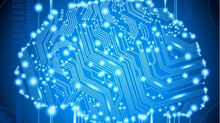Why Consciousness? (Consciousness Series: Part 4)
Consciousness is often something we take for granted. We live. We breathe. We think. We exist. If consciousness is a relatively basic function among all humans, why should we even study it in the first place? One important reason is that there are people who have disorders of consciousness. And for a long time, these disorders of consciousness were misunderstood and under-researched. However, disorders of consciousness now remain a popular method for researching the mechanisms of consciousness as well as clinical solutions to these disorders. But what exactly are disorders of consciousness, from a clinical standpoint? We will dive into all these questions in this blog post in order to provide some context and significance to the field of consciousness research.
Disorders of Consciousness:
You are probably guessing that a disorder of consciousness is when an individual has complications with consciousness, and, well, you're not wrong but there's definitely more to it than just that! The actual clinical aspect and neuroanatomy of disorders of consciousness are much more complex. "Disorders of Consciousness" is an umbrella term for several different conditions including:
Coma
This is a condition in which an injury or illness causes a period of time, which could last for different durations, of deep unconsciousness. A person in a coma would have closed eyes and no signs of arousal.
Vegetative State
A person in a vegetative state may look like they are awake, but have no behavioral interactions with their environment. This is due to severe brain dysfunction.
Minimally Conscious State
A person in a minimally conscious state is not fully unconscious nor conscious. They have an altered form of consciousness despite their ability to give some simple behavioral signs of awareness.
Locked-in Syndrome
Although locked-in syndrome is not technically considered to be part of this umbrella term of disorders of consciousness, it is a condition that causes a person to be aware yet unable to communicate or move. The cause of this syndrome is the paralysis of the limbs and facial muscles of a person.
Post-traumatic Confusional State
This is a period of time in which a person experiences confusion, amnesia, disorientation, and other neurobehavioral disturbances during the recovery period after a severe brain injury.


The main causes of all of these disorders of consciousness include severe brain injury, often to the brainstem, reduced oxygen or blood reaching the brain, stroke, or diffuse axonal injuries. A diffuse axonal injury is scattered brain lesions within tracts of white or gray matter across the brain. While all these disorders of consciousness are medically distinct from each other, depending on the individual recovery of a patient, some may even be able to move between
diagnoses depending on their levels of consciousness. So how does someone recover to being diagnosed as fully conscious? A diagnosis of fully conscious would entail consistent, accurate responses to yes or no questions as well as using objects in one’s environment purposefully.
Besides the clinical symptoms and descriptions of disorders of consciousness, these disorders also have interesting neuroanatomical bases. Like we have discussed before, consciousness is comprised of two critical components: wakefulness and awareness. Wakefulness is the basic prerequisite for awareness, which is a more higher order function in which one is aware of themselves and their surroundings. Wakefulness is existence, awareness is cognizance. Oftentimes, when transitioning from fully conscious to fully unconscious, these two properties, which are tied to specific brain regions, decline at the same time. However, in some cases, as in disorders of conscious, one of the properties, wakefulness or awareness, may be impaired while the other is completely intact. For example, someone in a vegetative state may seem wakeful but is not aware. To be more specific, a disorder of consciousness arises from brain injury to regions responsible for wakefulness and/or awareness. If the injury occurs to a brain region that impacts only one of these components of consciousness, then there is a dissociation in consciousness and thus the person develops a disorder of consciousness.
So what areas give rise to these two components of consciousness? The brain regions responsible for awareness are the cerebrum, which is surrounded by the outer cortex, and the thalamus. The cerebrum is the brain’s largest region and is divided into the left and right hemispheres; the cortex is its outer layer and is made up of gray matter. Collectively, the cerebrum and its outer cortex are responsible for memory, learning, emotions, and thinking. The thalamus is the “gateway for sensory pathways” and is also responsible for the emotional processing of sensory experiences.


The brain regions responsible for wakefulness, on the other hand, are the brain stem and reticular activating system. The brain stem is responsible for automatic responses such as breathing and heart rate regulation. The reticular activating system, which is a collection of neurons in the brain stem, regulates the transition from sleep to wakefulness and also stems into areas of the cortex and stimulates them, thus bridging wakefulness and awareness.
We discussed consciousness on the level of awareness and wakefulness and the respective brain regions they are connected to, but what about consciousness on the level of neurons? As we learned previously, consciousness has a lot to do with connectivity, which is the way neurons connect and are therefore able to signal each other and communicate. So, brain injury to one of these distinct regions responsible for awareness or wakefulness would disrupt the communication between these regions and thus lead to the dissociation of consciousness we discussed earlier.
The Issue with Anesthesia:
In addition to studies about disorders of consciousness, we also discussed consciousness research on the mechanisms of anesthesia. Prior to cosnciousness research, not much was known about how anesthesia induced unconsciousness. Since then, researchers have learned about how patients exit and reenter the realm of consciousness. By doing so, researchers have discovered biomarkers for consciousness during anesthesia. For example, EEG researchers have discovered distinguishable brain waves that mark when consciousness is lost and regained during administration of anesthesia. They also have found through EEG that the loss of communication between different brain regions triggers unconsciousness, which we know now to be a loss of connectivity, a feature that we have recently begun to regard as critical to consciousness. This asynchronous neural activity, where neurons in one brain region are firing while those in other critical cortical regions are not, led to the loss of consciousness the researchers witnessed during the administration of anesthesia to the patient.
But why is it important to study anesthesia? Why is there a need to even develop biomarkers for consciousness while undergoing anesthesia? Well, many people actually “wake up” or regain consciousness in the middle of a surgical procedure. It is not extremely common, but it does occur and is quite frightening, to say the least. Statistically, issues with general anesthesia, are, again, rare; during every 1,000 surgeries or procedures, only one or two patients may actually become conscious or aware, which is known as “anesthesia awareness.” During anesthesia awareness, patients may feel pressure, remember vague memories during procedures, or have sensory experiences of their surroundings.

The Importance of Consciousness Research - Why Do We Need Biomarkers?:
As you can see, there is a clear need to develop biomarkers for consciousness under anesthesia. But what about other biomarkers for consciousness? I mean, why study consciousness at all? Well, pertaining to disorders of consciousness, as you may have noticed from the research studies from the previous blog posts, developing biomarkers for consciousness can help professionals use neuroimaging to actually track the progress of patients with brain injury and monitor their consciousness. This is especially in patients that are actually more aware than previously recognized clinically. The more we study the ways in which consciousness can be measured, the more versatile methods there are to clinically measure and thus diagnose different levels of consciousness in the future. The problem with current behavioral diagnoses of disorders of consciousness is that they are not as accurate as they should be. Studies show that almost half (40%) of people who have been diagnosed as

vegetative may actually have internal awareness that is simply not observable, except through methods of neuroimaging. This is because many people with disorders of consciousness have “covert consciousness,” which cannot necessarily be assessed with the standard behavioral methods for assessing awareness. For example, someone who is in a vegetative state cannot physically respond but may still be able to mentally respond to the commands of doctors. Thus, there is the need for reliable neural biomarkers that doctors can easily recognize and use to make apt medical decisions. For example, such discoveries in consciousness research have allowed Giulio Tononi, a neuroscientist, to develop a system that combines EEG recordings and transcranial magnetic stimulation (TMS), which we have discussed a lot in meetings, to measure the degree of loss of interneuronal communication, thus allowing someone to see if a patient is actually unconscious or whether they have an altered form of consciousness. In these cases, biomarkers have the ability to discriminate between the diagnoses of different disorders of consciousness and aid in uncovering the pathophysiology of these disorders.
The use of such biomarkers won’t just help in the diagnosis of patients, but can also help doctors predict the prognosis of patients with disorders of consciousness depending on the complexity and accuracy of their EEG signals in response to tasks and commands or depending on the presence of asynchronous activity. Another alternative use for such biomarkers is the development of BCIs that use these biomarkers to allow patients with disorders of consciousness to communicate with their external environment by performing mental imagery tasks that induce specific responses through technology.

Finally, the world of consciousness research allows for many more applications besides understanding disorders of consciousness and anesthetics. We can also understand the effects of other altered states of consciousness and the dangers, such as states induced by various drugs or psychiatric disorders. We can also understand sleep disorders, developmental issues with consciousness, and the neural and genetic underpinnings behind perception. I hope through this blog post that I was able to add some context and significance to the research studies and consciousness research design I discussed in the previous blog posts in this series. Not only is consciousness research trekking into a misunderstood, fascinatingly complex frontier of the human experience, but it also allows us to make a difference in real world physiological issues and disorders.
Note from the Blogger:
So sorry for the delay on this blog post, I have been busy working on my collaboration with UC Berkeley for the MIND magazine, which is this awesome neurotechnology magazine initiated by UC Berkeley that features collaborations from neurotechnology organizations at various different university campuses. But thank you for reading this post, and I'll see you soon with the final post for this consciousness series!
Sources:
https://www.the-scientist.com/daily-news/measuring-consciousness-39451
https://www.nytimes.com/2019/06/26/health/brain-injury-eeg-consciousness.html
https://www.aapmr.org/about-physiatry/conditions-treatments/rehabilitation-of-central-nervous-system-disorders/disorders-of-consciousness
https://www.myshepherdconnection.org/disorders-consciousness/Intro-disorders-of-consciousness/brain-anatomy
https://www.myshepherdconnection.org/disorders-consciousness/Intro-disorders-of-consciousness
https://www.ncbi.nlm.nih.gov/pubmed/24100252
https://www.sciencedirect.com/science/article/pii/S1388245713013497
https://www.asahq.org/whensecondscount/preparing-for-surgery/risks/waking-up-during-surgery/





















